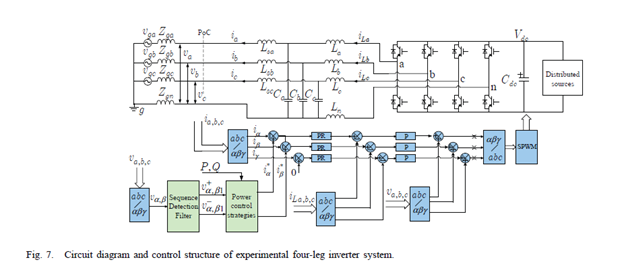
Last week I attended the National Association of Regulatory Utility Commissioners (NARUC) Summer Policy Summit in chilly Austin, TX, where running shoes never dry. I also learned that the National Association of State Utility Consumer Advocates (NASUCA) holds a conference in parallel in the same venue. This post begins to provide an overview of issues and concerns discussed at the conference, summarized in four words: rising rates [and] declining reliability. Let’s get into it.
Rapid Thermal Power Plant Retirement Results: Grid Stress
This section may be summarized using the title of the Tuesday panel discussion, “On the Brink: Reliability Challenges and the Thermal Generation Fleet.” Description: “The North American Electric Reliability Corporation’s summer 2023 reliability assessment warned of significant risk of energy shortfalls during periods of extreme demand across much of the U.S. Although rapid additions of solar, wind, and battery storage are providing clean and cheap megawatts to customers, NERC expressed caution about the pace of natural gas, coal, and nuclear generator retirements. NERC also underscored the need to maintain and expand a dispatchable baseload generation fleet to keep up with the higher demands that electrification and extreme weather are placing on the energy grid. Recently proposed and finalized federal environmental regulations may lead to accelerated retirements of thermal resources.”
That movie has played about 200 times in the Rant in recent years.
By the way, I’m looking forward to this week in the middle of the country as we will see how accurate MISO’s load forecast for the summer was. High-temperature forecasts are pushing 100°F in the upper Midwest. Fingers crossed for a little breeze. 🙄😬
Ramp Rates
Arshad Mansoor from the Electric Power Research Institute (EPRI) notes that by 2030-2035, PJM will add 70-80 GW of renewable supply. As the sun sets, there would be a 20 GW per hour ramp rate. That would dwarf the ~5 GW per hour ramp rate from the California “canyon” curve, representing the net load for dispatchable generation[1] to handle. This massive ramp, equal to bringing on 20 large nuclear reactors every hour, requires thousands of MW of hot spinning power plants on standby and wasting energy to be ready for it.
Inverter Risk
Inverter-based resources are synonymous with wind and solar generation. Both require electronic conversion of direct current power to alternating current power for the grid. The cartoon below shows how it works[2].
 It’s this circuit and “power controls strategies” versus a spinning turbine and generator, the speed of which is controlled by a reliable governor. Which do you suppose is more robust, resilient, and hardened? – this electronic box spring and controls or an unhackable spinning turbine and generator rotor? My notes as I listened to North American Electric Reliability Corporation (NERC) President and CEO Jim Robb: “Inverters coming online – have to tell the inverters how to perform. They are inherently stupid, unlike a spinning mass. Can trip off, bing, bang, and instantly 2.5 nukes-worth of capacity trips out.”
It’s this circuit and “power controls strategies” versus a spinning turbine and generator, the speed of which is controlled by a reliable governor. Which do you suppose is more robust, resilient, and hardened? – this electronic box spring and controls or an unhackable spinning turbine and generator rotor? My notes as I listened to North American Electric Reliability Corporation (NERC) President and CEO Jim Robb: “Inverters coming online – have to tell the inverters how to perform. They are inherently stupid, unlike a spinning mass. Can trip off, bing, bang, and instantly 2.5 nukes-worth of capacity trips out.”
Resiliency and Black Start
Few people think of black start, and I would guess most of you haven’t heard the term before. Black Start describes what happens as the electric grid is restored after a blackout, and OMG, yes, it starts with internal combustion engines (diesel generators)!
Spinning up the grid from a black start is like rebuilding a house of cards – one card at a time. The diesel generator establishes a base of alternating current power going to spin up larger and larger thermal generators until some portion of the grid can be energized. Then renewable resources can be added to supply the grid. The sequence may flow as illustrated in the cartoon below. The next step would be interconnecting large pieces of the grid.
 A significant concern is too many add-on renewables and insufficient dispatchable resources to power up the grid from a black start.
A significant concern is too many add-on renewables and insufficient dispatchable resources to power up the grid from a black start.
A perfect analogy of renewables on the grid is a tandem kiddy bike attached to Mom’s stable and powerful bike, shown below. The real bike represents the thermal power plant. The kiddy thing represents renewables. Both the kiddy thing and renewables require the stability of mom to make them work. The kiddy bike and renewables provide power on the whim. Mom provides the power, balance, and stamina to reach the destination. Thermal power plants provide stability and backup for all resorts to ensure grid reliability.
 For this reason, my FERC idol, James Danly, believes FERC needs to ensure the “right economics” are built into rates to ensure we have enough spinning mass (the grown-up bike) for reliability and resiliency. I.e., black start resources must be adequately compensated or we may find ourselves sitting in the dark for a very, very long time.
For this reason, my FERC idol, James Danly, believes FERC needs to ensure the “right economics” are built into rates to ensure we have enough spinning mass (the grown-up bike) for reliability and resiliency. I.e., black start resources must be adequately compensated or we may find ourselves sitting in the dark for a very, very long time.
Peak Load on the Rise
While at the conference, Monday and Tuesday, 17-18 July, ERCOT set demand records on consecutive days and will continue to do so. Other parts of the country, like Arizona, also hit records last week, but it’s not just the weather. Population growth and soaring industrial loads from manufacturing to data centers are piling onto demand peaks. Arshad Mansoor (EPRI) “Twenty years of no industrial load growth is about to change.” I added that the electrification of heating systems and a million electric vehicles here and there would add tremendous grid stress.
Next Up
I have much more to share, continuing next week – pricing pressures and looking over the hill.
[1] Dispatchable generation includes all forms of thermal power plants that run when ordered to run.
[2] https://www.researchgate.net/publication/224144390_Pliant_Active_and_Reactive_Power_Control_for_Grid-Interactive_Converters_Under_Unbalanced_Voltage_Dips





